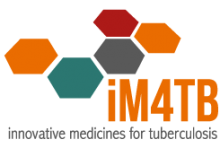Tuberculosis (TB) is an infectious disease that is caused
by a bacterium called Mycobacterium tuberculosis.
“Tuberculosis (TB) is a communicable disease that is a major cause of ill health, one of the top 10 causes of death worldwide and the leading cause of death from a single infectious agent (ranking above HIV/AIDS). 30 high TB burden countries account for almost 90% of those who fall sick with TB each year. TB is a disease of poverty. Economic distress, vulnerability, marginalization, stigma and discrimination are often faced by people affected by TB.
Globally, an estimated 10 million people fell ill with TB in 2019, a number that has been declining very slowly in recent years. There were an estimated 1.2 million TB deaths among HIV-negative people in 2019 (a reduction from 1.7 million in 2000), and an additional 208 000 deaths among HIV-positive people (a reduction from 678 000 in 2000).
Geographically, most people who developed TB in 2019 were in the WHO regions of South-East Asia (44%), Africa (25%) and the Western Pacific (18%). Eight countries accounted for two thirds of the global total: India, Indonesia, China, the Philippines, Pakistan, Nigeria, Bangladesh and South Africa.
The WHO’s goal is to reduce death from TB by 90% by 2030.”
World Health Organisation – Global Tuberculosis Report 2020
How do people get infected by tuberculosis?
The TB bacteria are put into the air when an infected person coughs, sneezes or speaks. Dried sputum (mucus that has been coughed up or spat out) that is scuffed back up into the air can also be a source of contamination.
People nearby may breathe in the bacteria and become infected. The TB bacteria usually attack the lungs, but can also infect any part of the body such as kidney, spine and brain.
What are the symptoms?
The main symptoms of active TB disease are:
- cough
- pain in the chest
- coughing up blood
- fatigue
- weight loss
- fever
- sweating at night
What are the treatments available to-date?
There are more than 20 drugs available for TB treatment. They are used in different
combinations according to the circumstances. Of the approved drugs, isoniazid (INH), rifampin (RIF), ethambutol (EMB), and pyrazinamide (PZA) are considered first-line anti-TB drugs and form the core of standard treatment regimens. More than 90% of people that do not have a drug-resistant TB can be cured in six months.
Download the WHO Guidelines for Treatment of Tuberculosis (4th Edition, 2010)
Rifampicin-Resistant TB (RR-TB), Multidrug-Resistant TB (MDR-TB), and Extensively Drug-Resistant TB (XDR-TB)
Drug-resistant TB continues to be a public health threat. Worldwide in 2019, close to half a million people developed rifampicin-resistant TB (RR-TB), of which 78% had multidrug-resistant TB (MDR-TB). Globally, 206’030 cases of MDR/RR-TB were detected and notified in 2019, representing 2.8% of total TB notifications and a 10% increase from 186’883 in 2018.
MDR-TB is defined as TB that is resistant to at least two of the most powerful first-line treatment anti-TB drugs (isoniazid and rifampicin). Drug resistance occurs primarily because of improper treatment of standard TB, but resistant strains are also being spread from person to person. Cases of tuberculosis that are resistant to virtually all drugs currently available (XDR-TB) are increasing at an alarming rate around the world. These cases are particularly difficult and expensive to both diagnose and treat, two factors that lead to a major treatment access gap.




